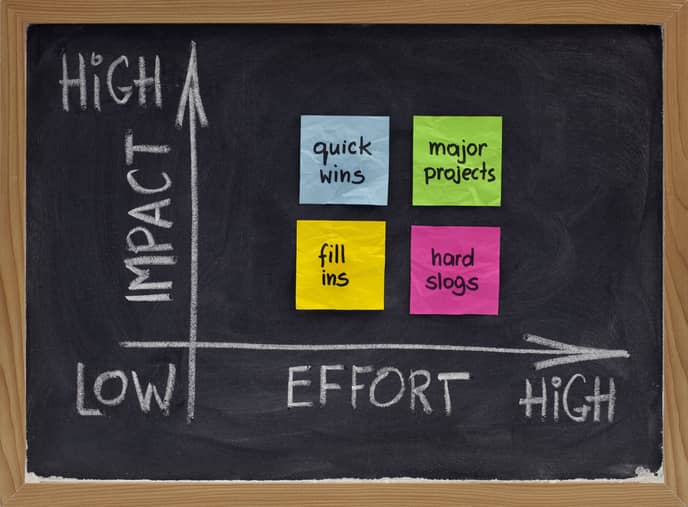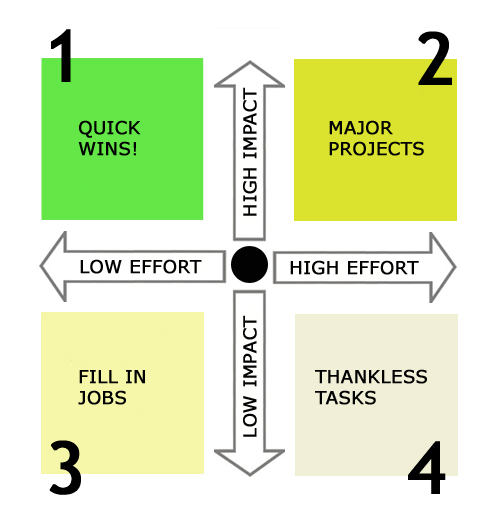Lean offers a variety of strategies for identifying and eliminating waste. One of the most effective comes with an interesting name: Single Minute Exchange of Die (SMED).
It’s also known as a Quick Changeover.
SMED is a tool in Lean used to reduce the amount of time it takes to change from running one process in an operation to running another. In addition to improving cycle time in a process, SMED can help reduce costs and increase flexibility within a process.
The “single minute” title refers to the goal of reducing the changeover time to single-digit minutes, from a maximum of nine minutes down to one (if possible).
Examples of SMED
One real-life example of SMED can be seen during professional car racing.
The speed of pit crews often can make the difference between winning and losing for race car drivers. Pit crews typically videotape each pit stop, constantly looking for ways to speed up the time a car stays in the pit lane. The time spent for each operation is analyzed – changing tires, cleaning windshields and pumping gas.
Another happens every day in the restaurant industry. Many restaurants offer three menus – breakfast, lunch and dinner. Changing from one to the other can take as long as an hour as kitchens prepare for different meals and (in some cases) one serving staff clocks out while another clocks in. Speeding up this process allows for a smoother transition between serving times. In some cases, restaurants have gotten so good at it that they offer items from two menus – sometimes all three – at any time of the day.
A Brief History of SMED
As with many strategies involved with process improvement in general and Lean and Six Sigma in particular, SMED began in Japan at Toyota.
In the 1950s, consultant Shigeo Shingo noticed an inefficient process at Toyota involving the body molding process. Much of the waste came from time spent switching over to new tools on pieces of equipment that were needed for different phases within the body molding process.
The changeover took between two and eight hours. Toyota also spent considerable amounts on land used to store vehicles being built. Shingo correctly projected that Toyota could save money by speeding up the changeover process.
The improvements required changing the entire process to require less changeover time. That meant modifying factory equipment and vehicle parts and changing the order of steps in building car body moldings. By the 1970s, the changeover was just three minutes.
All this supported the just-in-time manufacturing process that is a key component of the much-admired Toyota Production System. Just-in-time manufacturing reduces the time between a customer’s demands and the ability of a business to fulfill it. SMED is a key part of that process.
Taken together, it’s why you don’t have to wait three months for your new Toyota to arrive in the car lot – it’s already there for you.
Principles of SMED
Other businesses wanted to emulate this type of success at Toyota. It now goes beyond manufacturing. SMED can apply to any process that requires a changeover, from creating software to the restaurant and racing examples mentioned above.
In general, SMED steps take place within one of two areas: external and internal setup components. Internal steps happen while the equipment or process is stopped. External steps occur while the equipment or process is running. Both are important in accomplishing SMED.
External
With external components, one of the focuses is on having supplies and tools ready for a changeover. For example, you don’t see pit crews running around looking for the right tires or the gas hose when a race car pulls in. In the best restaurants, chefs don’t suddenly have to find choice ground beef for the lunch burgers just as the clock strikes noon.
All of this is already on hand through careful analysis of what will be needed and then adequately ordering supplies so that the needed items are available.
That sort of predictive analysis is key to making the external part of SMED successful.
Internal
This is where the videotaping of a process proves especially valuable. Careful analysis of how a team handles the details of a process can help leaders identify areas where improvements can be made.
Part of the process is identifying internal components that can be made external, such as having tires ready in the pit crew example. Any operation that can be done before the actual changeover takes place should be identified. This helps speed up the process significantly.
Steps To Implement SMED
The following is an outline of the steps that need to be taken to implement SMED.
Identify The Process
In this first step, the focus area for improving changeover times is identified. It needs to be a situation where:
- The changeover is long enough where there is room for improvement
- There has historically been a lot of variance in the past in changeover times
- The operation is done frequently
- All employees involved in the changeover process have been trained and have buy-in for the change
- The process has been a bottleneck in the overall operation, meaning changes will have immediate impact
Identify Elements
Again, video typically comes in handy. Seeing how the process is being handled can help identify areas for improvement. Each element of the process should be quantified by the amount of time it takes as well as the cost. The process is then mapped out by each individual element, those involving both human and machine activities.
Separate External Elements
In this step, all elements of the operation that are external should be separated. This includes elements that are currently internal but can be made external. On each element, it should be asked: can this be done while the equipment or process is running? If so, it can be accomplished before the actual changeover takes place.
Convert Internal to External
As mentioned above, any element that can be moved to external should now be moved. Prioritize the list so that the elements with the most potential impact on reducing time and cost are acted on first. This involves advanced preparation on many elements. It also could involve reconfiguring machinery or investing in extra machinery that can handle an external element while the main process is still running.
Streamline
In this final step, the internal elements should be simplified to take less time. Every single element must be considered. This also can involve new equipment or modification of existing equipment to make changeovers run smoother and faster. Also keep in mind to eliminate wasted motion or time spent waiting – two of the major areas of waste addressed in Lean.
Putting it all together can lead to operations that run faster while also producing quality products. Toyota, pit crews and even restaurants have put SMED into play – it can work for your organization too.



